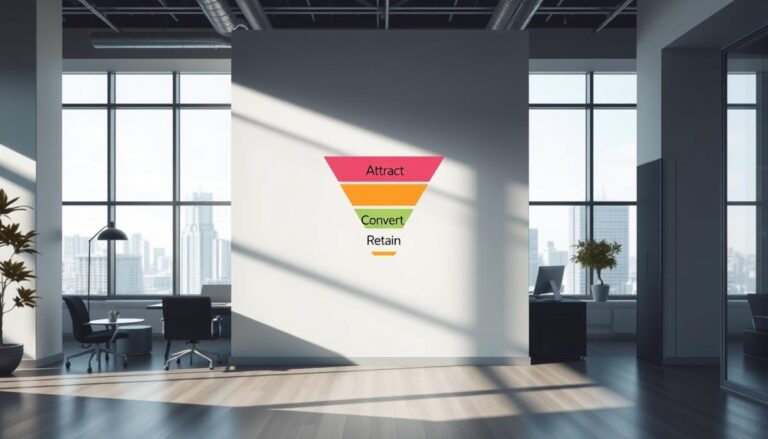Brand vs Direct Response Marketing: What Every Founder Should Know
In 2025’s rapidly evolving digital landscape, founders face unprecedented complexity in marketing strategy decisions. The traditional dichotomy between brand and direct response marketing has evolved into a sophisticated ecosystem where AI-powered personalization, omnichannel integration, and real-time optimization blur traditional boundaries. Understanding how to balance these approaches is critical for sustainable growth and competitive advantage.
Modern marketing demands strategic integration of brand building and performance marketing, with successful companies achieving up to 51% higher revenue growth when combining both approaches effectively. With global digital ad spend exceeding $700 billion and consumers encountering 4,000-10,000 ads daily, founders must master the art of building lasting brand equity while driving immediate conversions.
The stakes are higher than ever: companies with strong brand-performance integration achieve 2.5x faster revenue growth and 40% higher customer lifetime value. Success requires understanding when to prioritize each approach, how to integrate them seamlessly, and which emerging technologies amplify both strategies for maximum impact.
Key Takeaways
- Modern marketing success requires strategic integration of brand building and direct response approaches.
- AI-powered personalization and automation enhance both brand engagement and conversion optimization.
- Timing and resource allocation between strategies determine long-term sustainable growth.
- Omnichannel experiences unify brand consistency with performance-driven outcomes.
- Data-driven insights enable founders to optimize the brand-performance marketing balance continuously.
The Evolution of Marketing Strategy in 2025
The marketing landscape has transformed dramatically, moving beyond simple brand awareness campaigns and direct response tactics to sophisticated, AI-enhanced strategies that deliver both immediate results and long-term brand equity.
The Integrated Marketing Reality
Modern marketing operates on a spectrum where brand and direct response elements work synergistically rather than in isolation. With consumers experiencing fragmented digital journeys across multiple touchpoints, successful founders understand that every interaction must serve both brand building and conversion objectives.
Key elements defining the 2025 marketing spectrum include:
- AI-Powered Personalization: Advanced algorithms that deliver brand-consistent messaging while optimizing for individual conversion probability
- Real-Time Optimization: Dynamic campaign adjustments that maintain brand integrity while maximizing performance metrics
- Cross-Channel Integration: Unified experiences that reinforce brand values while driving measurable actions
- Predictive Analytics: Data science that forecasts both brand sentiment and conversion likelihood
The Convergence Advantage
Companies successfully integrating brand and performance marketing achieve significant competitive advantages:
- Revenue Growth: 51% higher revenue growth compared to companies using single-approach strategies
- Customer Value: 40% higher customer lifetime value through improved brand loyalty and conversion optimization
- Market Share: Faster market penetration through combined brand awareness and conversion tactics
- Efficiency Gains: Lower customer acquisition costs due to enhanced brand recognition and optimized targeting
Strategic Brand Marketing: Building Long-Term Value in 2025
Brand marketing has evolved beyond traditional awareness campaigns to encompass sophisticated strategies that build emotional connections, establish market positioning, and create sustainable competitive advantages.
Modern Brand Building Fundamentals
Strategic brand marketing in 2025 focuses on creating authentic connections that drive both emotional engagement and measurable business outcomes. Successful brand strategies combine storytelling excellence with data-driven insights to build lasting customer relationships.
Essential brand marketing components include:
- Purpose-Driven Messaging: Authentic brand narratives that resonate with target audience values and aspirations
- Omnichannel Consistency: Unified brand experiences across all customer touchpoints and interaction channels
- Community Building: Strategies that foster brand advocacy and user-generated content creation
- Thought Leadership: Content strategies that position brands as industry authorities and trusted advisors
Technology-Enhanced Brand Experiences
Advanced technologies amplify brand marketing effectiveness through sophisticated targeting and personalization:
- AI-Powered Content Creation: Generative AI that maintains brand voice while creating personalized content at scale
- Predictive Brand Analytics: Machine learning that forecasts brand sentiment and identifies optimization opportunities
- Immersive Experiences: AR/VR technologies that create memorable brand interactions and deeper engagement
- Social Listening Intelligence: Advanced monitoring that provides real-time brand perception insights
Measuring Brand Marketing ROI
Modern brand measurement goes beyond traditional awareness metrics to include business impact indicators:
- Brand Equity Metrics: Quantifiable measures of brand value, preference, and competitive positioning
- Customer Lifetime Value: Long-term revenue attribution to brand marketing investments
- Market Share Growth: Direct correlation between brand strength and market position expansion
- Organic Reach Amplification: Brand strength impact on earned media and viral content performance
Direct Response Marketing: Driving Immediate Growth and Revenue
Direct response marketing has evolved into a sophisticated discipline that leverages advanced analytics, automation, and personalization to drive immediate conversions while supporting long-term growth objectives.
Performance Marketing Excellence
Modern direct response marketing combines traditional conversion focus with advanced targeting capabilities, enabling founders to achieve immediate revenue growth while building valuable customer data assets.
Advanced direct response strategies include:
- AI-Powered Optimization: Machine learning algorithms that optimize campaigns in real-time for maximum conversion rates
- Dynamic Creative Testing: Automated A/B testing that identifies highest-performing creative elements and messaging
- Predictive Audience Modeling: Advanced segmentation that identifies prospects most likely to convert
- Cross-Channel Attribution: Comprehensive tracking that attributes conversions across all customer touchpoints
Conversion Optimization Technologies
Cutting-edge technologies enhance direct response marketing effectiveness:
- Real-Time Personalization: Dynamic content and offer optimization based on individual user behavior and preferences
- Automated Bidding Systems: AI-powered bid management that maximizes ROI across advertising platforms
- Progressive Profiling: Gradual data collection that reduces friction while improving targeting precision
- Behavioral Trigger Automation: Instant response systems that capitalize on high-intent moments
Strategic Decision Framework: When to Prioritize Each Approach
Successful founders use data-driven frameworks to determine optimal allocation between brand building and direct response marketing based on business stage, market conditions, and growth objectives.
Brand Building Priority Scenarios
Prioritize brand marketing when building long-term competitive advantages, entering new markets, or establishing category leadership positions.
Optimal brand building conditions include:
- Market Entry: Entering competitive markets where differentiation and trust-building are essential
- Category Creation: Pioneering new product categories that require market education and positioning
- Competitive Defense: Protecting market share against aggressive competitors through brand loyalty
- Premium Positioning: Establishing premium pricing power through superior brand perception
Direct Response Priority Scenarios
Focus on direct response marketing when immediate revenue generation, rapid scaling, or market validation are primary objectives.
Direct response optimization conditions include:
- Revenue Urgency: Achieving short-term revenue targets or addressing cash flow requirements
- Product Launches: Driving immediate adoption and market penetration for new offerings
- Market Validation: Testing product-market fit and demand before significant brand investment
- Seasonal Opportunities: Capitalizing on time-sensitive market conditions and consumer behavior
Creating an Integrated Marketing Strategy for Maximum Impact
Building effective integrated marketing strategies requires sophisticated planning, resource allocation, and execution frameworks that optimize both brand building and performance marketing simultaneously.
Strategic Integration Framework
Successful integration requires alignment of brand and performance objectives through shared metrics, unified customer data, and coordinated campaign execution.
Integration best practices include:
- Unified Customer Data: Comprehensive customer profiles that support both brand engagement and conversion optimization
- Shared Attribution Models: Measurement frameworks that credit both brand and performance touchpoints accurately
- Coordinated Content Strategy: Content that serves both brand storytelling and conversion objectives
- Cross-Functional Collaboration: Teams that work together rather than in marketing silos
Budget Allocation Strategies by Business Stage
Optimal resource allocation varies significantly based on company maturity and market position:
- Startup Stage (0-2 years): 70% direct response, 30% brand building for rapid validation and growth
- Growth Stage (2-5 years): 60% direct response, 40% brand building for sustainable scaling
- Mature Stage (5+ years): 50% direct response, 50% brand building for market leadership
- Market Leaders: 40% direct response, 60% brand building for defensive positioning
Technology Stack for Modern Marketing Excellence
Building effective integrated marketing requires sophisticated technology infrastructure that supports both brand building and performance optimization across all channels and customer touchpoints.
Essential Marketing Technology Components
Modern marketing success depends on integrated technology stacks that unify customer data, automate optimization, and provide comprehensive performance insights.
Core technology requirements include:
- Customer Data Platforms: Unified customer profiles that support both brand engagement and conversion tracking
- Marketing Automation Systems: Sophisticated workflows that nurture leads while maintaining brand consistency
- AI-Powered Analytics: Machine learning platforms that optimize both brand sentiment and conversion performance
- Creative Management Platforms: Tools that maintain brand guidelines while enabling performance-driven creative testing
Emerging Technology Integration
Advanced technologies that enhance both brand and performance marketing effectiveness:
- Generative AI: Content creation that maintains brand voice while optimizing for conversion
- Predictive Analytics: Forecasting tools that anticipate both brand impact and performance outcomes
- Blockchain Attribution: Transparent tracking that accurately credits both brand and performance touchpoints
- Voice and Conversational AI: Brand-consistent automated interactions that drive conversions
Team Structure and Organizational Excellence
Building high-performing marketing organizations requires strategic team structures, skill development, and cultural alignment that supports both brand excellence and performance optimization.
Modern Marketing Team Architecture
Successful marketing teams combine brand specialists and performance experts within integrated structures that promote collaboration and shared accountability.
Optimal team composition includes:
- Brand Strategy Leadership: Senior leaders who define brand positioning and ensure consistency across all initiatives
- Performance Marketing Specialists: Data-driven experts who optimize conversion rates and ROI across all channels
- Creative Technologists: Professionals who bridge brand creativity with performance optimization requirements
- Data Scientists: Analytics experts who provide insights supporting both brand and performance decisions
Skills Development for 2025
Essential capabilities for modern marketing professionals:
- AI and Automation Literacy: Understanding of machine learning applications in both brand and performance marketing
- Cross-Channel Expertise: Ability to create cohesive experiences across digital and traditional channels
- Data Analysis Proficiency: Skills to interpret both brand sentiment and performance metrics effectively
- Agile Methodology: Rapid testing and iteration capabilities that serve both brand and performance objectives
Conclusion: Mastering the Brand-Performance Balance for Sustainable Growth
Success in 2025’s marketing landscape requires sophisticated integration of brand building and direct response strategies, supported by advanced technologies and data-driven decision-making. Founders who master this balance achieve 51% higher revenue growth and 40% higher customer lifetime value compared to single-approach competitors.
The future belongs to marketing leaders who view brand and performance as complementary rather than competing priorities, creating unified strategies that build lasting competitive advantages while driving immediate business results. By implementing integrated approaches, leveraging emerging technologies, and building collaborative teams, founders can achieve sustainable growth that compounds over time.
Key success factors for marketing excellence include:
- Implementing AI-powered systems that optimize both brand consistency and conversion performance
- Creating unified measurement frameworks that attribute value to both brand and performance touchpoints
- Building cross-functional teams that collaborate on integrated strategies rather than working in silos
- Developing technology stacks that support seamless omnichannel brand experiences and conversion optimization
As marketing continues evolving at unprecedented speed, the founders who succeed will be those who embrace integration, leverage advanced technologies, and maintain relentless focus on both immediate results and long-term brand value creation.
FAQ
How do I determine the right balance between brand and direct response marketing?
The optimal balance depends on your business stage: Startups should allocate 70% to direct response and 30% to brand building, while mature companies often reverse this ratio. Consider your cash flow needs, market position, and growth objectives when deciding.
What are the key differences between brand and direct response marketing in 2025?
Brand marketing focuses on long-term relationship building, emotional connection, and market positioning, while direct response marketing prioritizes immediate conversions and measurable ROI. Modern approaches integrate both for maximum effectiveness.
How can AI enhance both brand and performance marketing strategies?
AI enables personalized content creation that maintains brand voice while optimizing for conversions, predictive analytics for both brand sentiment and performance forecasting, and automated optimization that serves both objectives simultaneously.
What metrics should I track for integrated brand and performance marketing?
Track brand equity metrics, customer lifetime value, conversion rates, market share growth, organic reach amplification, and cross-channel attribution. Use unified measurement frameworks that credit both brand and performance touchpoints accurately.
When should startups prioritize brand building over direct response marketing?
Prioritize brand building when entering competitive markets requiring differentiation, creating new product categories, defending against aggressive competitors, or establishing premium positioning that justifies higher prices.
How do I build a marketing team that excels at both brand and performance marketing?
Create integrated team structures with brand strategists, performance specialists, creative technologists, and data scientists. Foster collaboration through shared metrics, unified customer data, and cross-functional project teams.
What technology stack do I need for effective integrated marketing?
Implement Customer Data Platforms for unified profiles, marketing automation for brand-consistent nurturing, AI-powered analytics for optimization, and creative management platforms that maintain brand guidelines while enabling performance testing.
How can small businesses compete with larger companies in brand building?
Focus on authentic storytelling, niche audience targeting, community building, and leveraging AI tools for content creation at scale. Use performance marketing data to inform brand positioning and messaging strategies.






